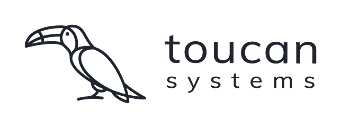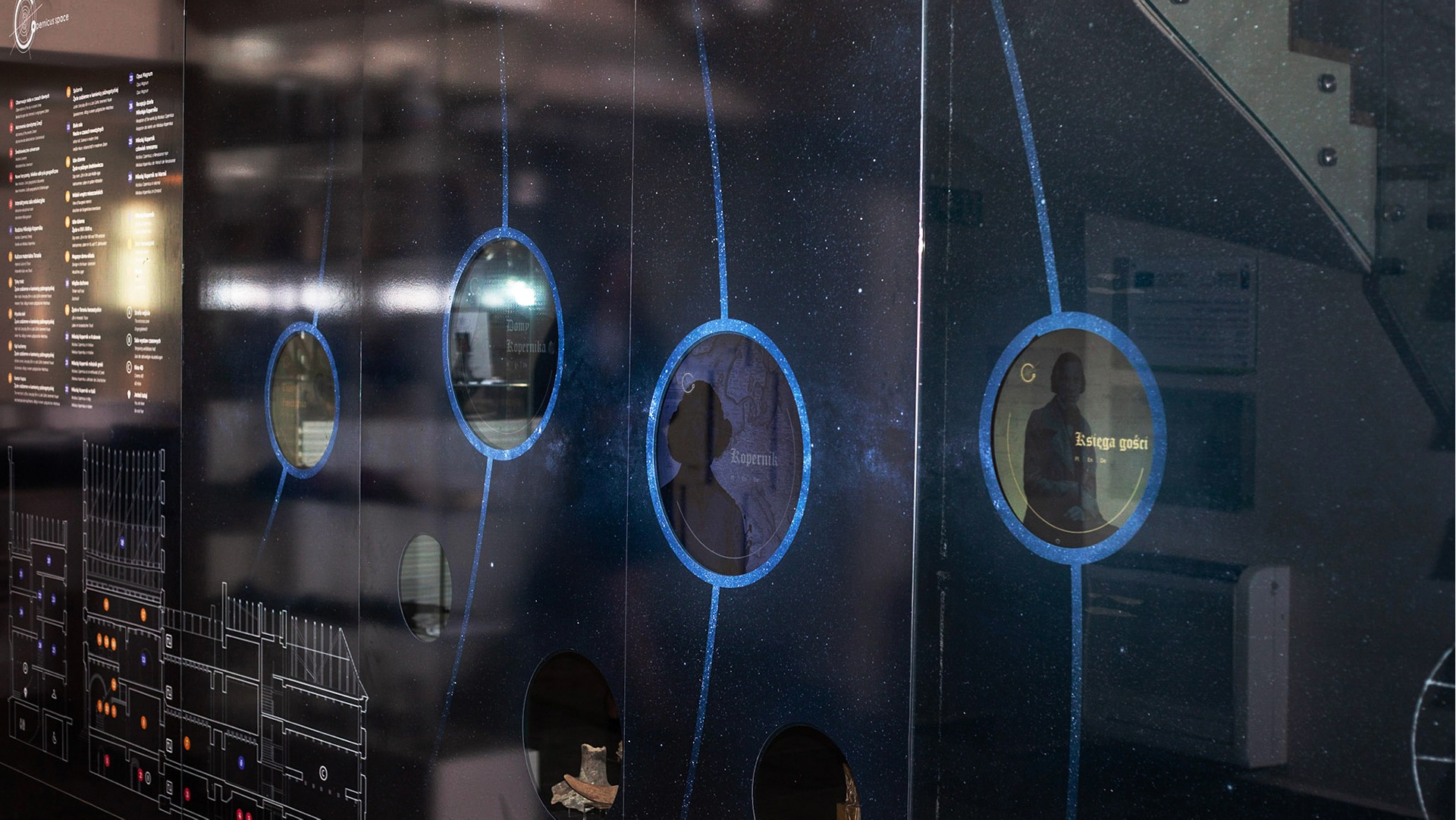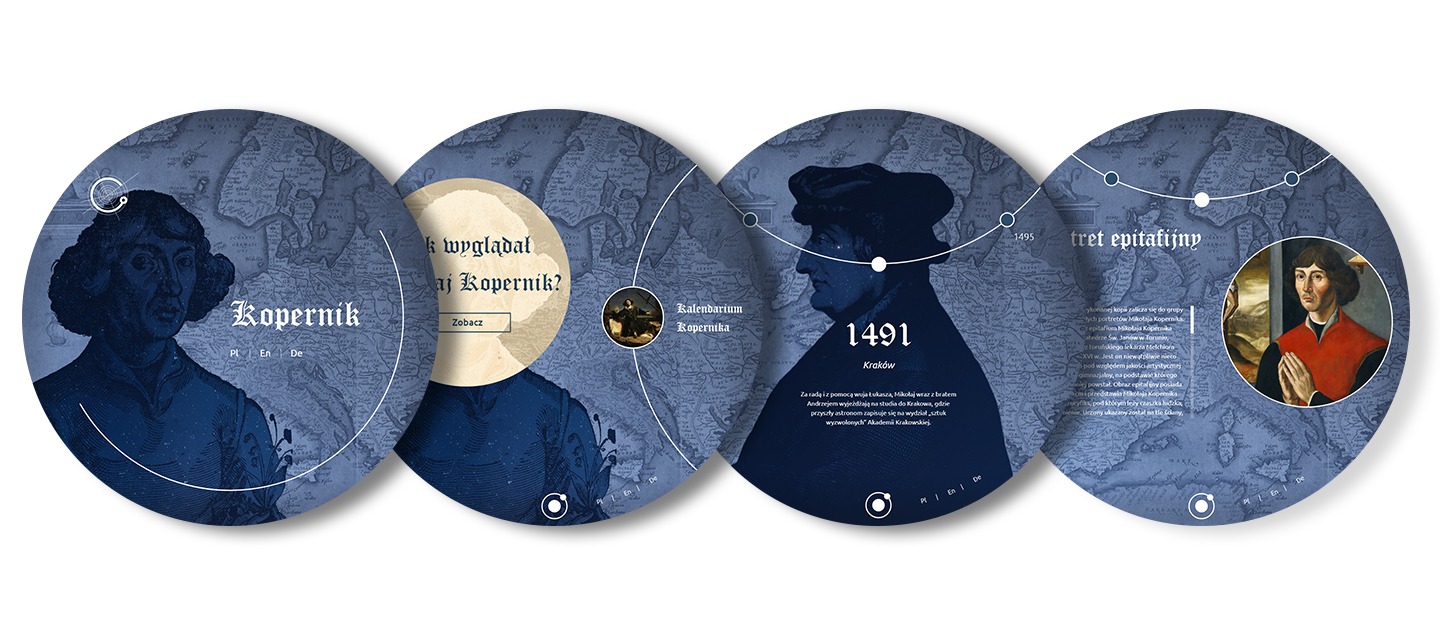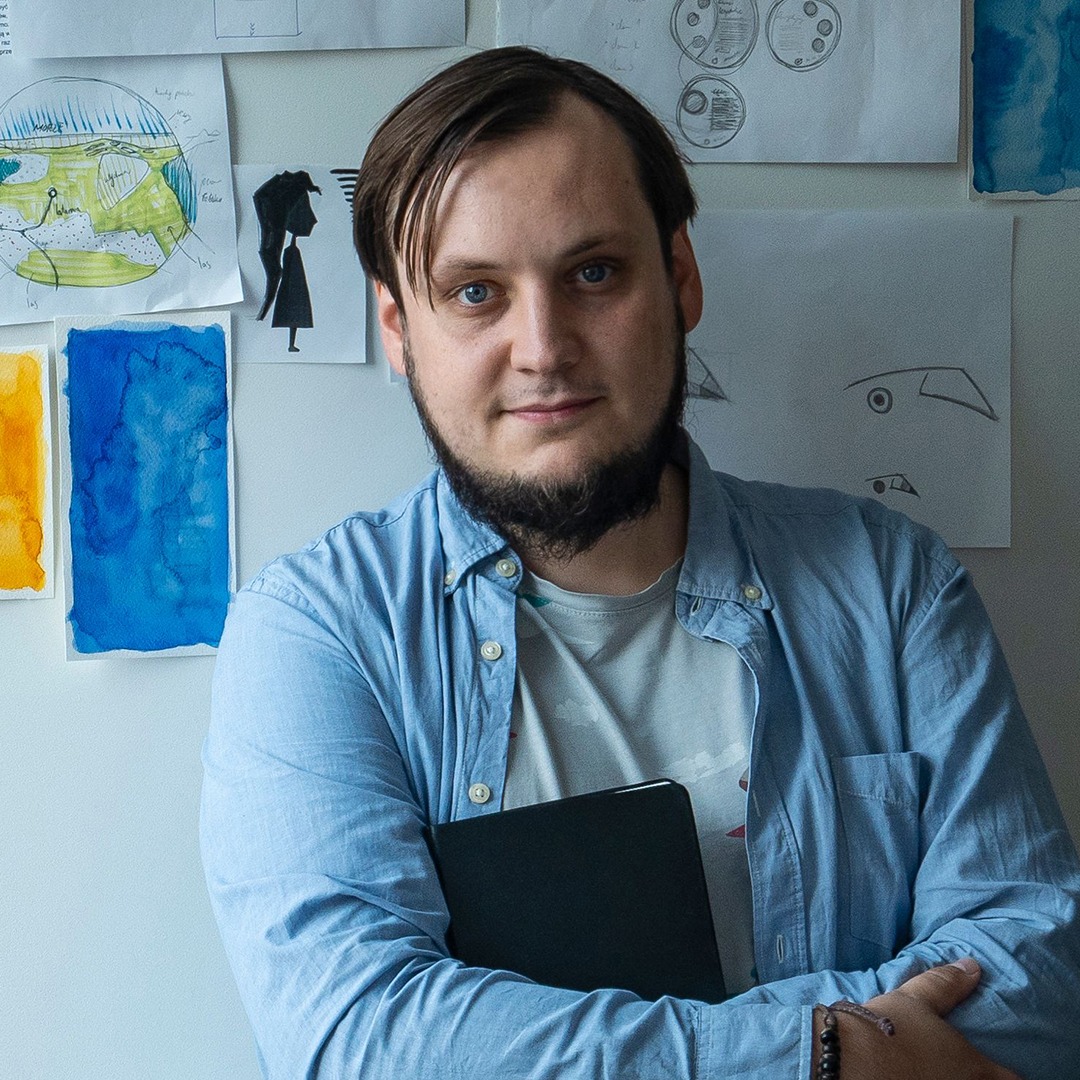Round screens at exhibitions, although they are not new to the market, still remain an interesting element of displays. Is it worth using such a mode in a designed museum exhibition? I would like to explain some specifics.
Round and rectangular interfaces
The process of designing round interfaces is significantly different from the one which concerns classical rectangular applications. This can be an advantage and at the same time a disadvantage for exhibition applications. On the one hand, round applications allow you to create an interesting and unique stylistics while, on the other hand, significantly limiting the space for content.
On the classic rectangular screen, application elements are arranged on a grid of lines parallel to the edges of the screen. As you have probably guessed already, in a circular application there is no possibility to use such a grid. Rectangular elements (e.g. text fields) are strongly constrained by the shape of the screen, and the photographic material must be precisely framed so as to fit into the circular format.
The result of such a procedure is a significant limitation of space for content in favor of aesthetics of the application itself. This means less space for texts, smaller photos, and potential difficulties with viewing full-screen videos.
On the other hand, the round layout of the application makes it necessary to design highly individual solutions, which can be a key attractive point of the whole exhibition.
Round interface, attraction in itself
I definitely think that it is worth considering placing a round display at an exhibition. However, it should be remembered that it will be mainly an eye-catching gadget. Therefore, remember not to plan to place significant content there, as the audience’s attention will be focused on the visual aspect of the position rather than the content itself.
An excellent example of using such screens is the House of Nicolaus Copernicus in Toruń which was renovated in 2018. Right at the entrance to the museum there are as many as four screens of this type. The stand really makes a huge impression. Learn more about this project.
